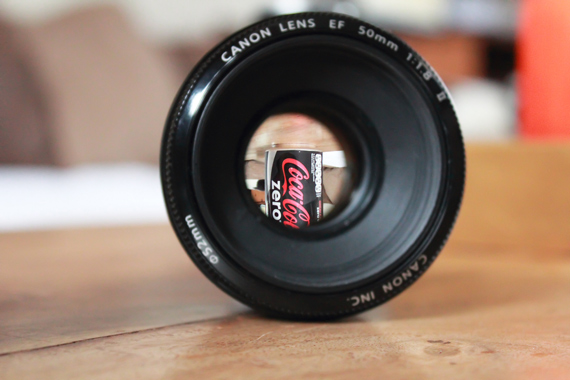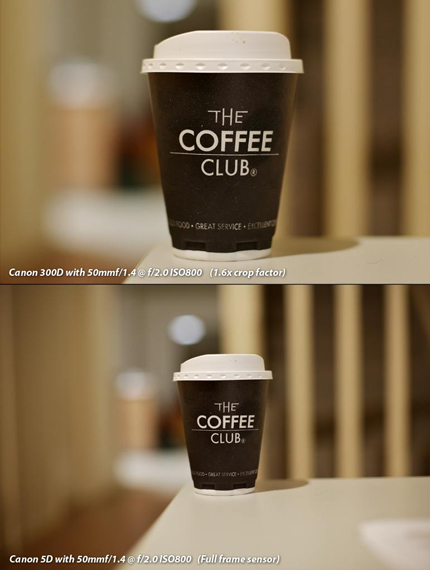So you’ve purchased a DSLR and now you’re considering the acquisition of more lenses to expand your creative capabilities. It may be as simple as getting another lens from the same manufacturer, designed for your camera. But is it?

“Life through the lens…” captured by PictureSocial member Michelle Hobson
For the purposes of this article, I am going to refer only to (arguably) the two biggest camera manufacturers to keep things simple: Canon and Nikon. Each of these manufacturers offers two types of DSLR; consumer level with an APS-C sensor, and pro level with a full frame (FF) sensor.
Sensor Sizes
Canon’s APS-C sensor is approximately 22 x 15mm while Nikon’s is approximately 24 x 16mm. No significant difference there, but compare those with a FF sensor (common to both brands) which measures 36 x 24mm. Does that size sound familiar? If it does, you probably shot on 35mm film at one point in your life, because that’s the size of a negative or slide in that film format.
Why the concern over sensor sizes, and what’s that got to do with lenses? If you consider that a lens projects a circular image onto the back of the camera and where the sensor is mounted, the diameter of that ‘image circle’ will determine whether or not it will completely cover the sensor. A lens designed for a full frame camera will certainly do that for both APS-C and FF sensors, but one designed for APS-C cameras will only have an image circle large enough to cover the APS-C sensor.

“Yossarian the (Full Frame!) Cat” captured by Tom Bricker using a Nikon D700 camera with full-frame sensor.
Canon distinguishes between the two designs by marking its APS-C-only lenses (sometimes called digital-only) with EF-S while full frame lenses are designated EF. Similarly, Nikon designates theirs as DX and FX for APS-C and full frame, respectively. If you try to attach an EF-S lens to a full frame Canon DSLR, for example, it won’t go. One of the reasons that the manufacturer intentionally makes the mounts incompatible is that the image circle of the EF-S lens will not completely cover the sensor. They are knowingly preventing you from taking ‘vignetted’ shots with dark corners. Conversely, however, you can certainly attach an EF lens to either an APS-C or a pro level Canon DSLR.
Crop Factor
Having made that last statement, some further qualification is required. Imagine that full frame lens projecting an image whose circle more than adequately covers the FF sensor from corner to corner. If you were to project that same image circle onto the much smaller APS-C sensor, the sensor is now only intercepting a fraction of the image circle that the FF sensor intercepted. As a result, the APS-C sensor only ‘sees’ a fraction of the image ‘seen’ by the FF sensor. This is equivalent to zooming in on the full frame image, and is called crop factor. It is typically about 1.6 times between the two formats.
Note that crop factor refers to the sensor size ratio and is not affected by the lens, as long as the focal length of the lens is constant in both cases. So, if we attached a 50mm lens to an APS-C camera and an 80mm lens to a full frame camera, they would capture images that were approximately the same. This is because the 50mm lens on the APS-C camera apparently magnifies the focal length to 50mm x 1.6 = 80mm.
So how does this affect your lens purchases today? Let’s say you’re currently using an APS-C camera, but you want to advance to a FF camera in the future. After all, these large sensor camera bodies are becoming more and more attractively priced, and offer generally better noise performance at higher ISO settings. If you buy all your lenses now in EF-S or DX format, you will have to sell the lot when you buy the pro level body, and will have to buy a complete suite of EF or FX lenses instead. If, however, you buy full frame lenses now, you will not only be able to use them on your current camera but on your future one as well.
Yes, you will pay more for pro level lenses, but chances are you are getting better glass and probably more solid construction. And remember–you don’t have to buy the camera manufacturer’s brands. Third-party lens manufacturers offer lenses in various mounts. Just be sure that you’re buying the full frame version if you decide to go that route.
About the Author:
Gordon Wood (www.filmscapes.ca) is an engineer, technical writer, photographer and photography instructor.
Go to full article: How do Camera Sensor Sizes Affect Lens Choices?
What are your thoughts on this article? Join the discussion on Facebook
Article from: PictureCorrect
